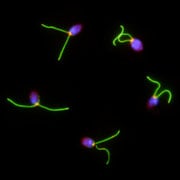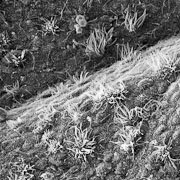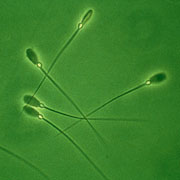 |
 |
 |
 |
Cilia, Flagella, and Disease
Our research is concerned with the biology of cilia and flagella, including the non-motile primary cilia that are present on most cells in our bodies and function as cell antennae, receiving signals from the environment and transmitting these to the cell body. Our findings have important implications for human development and male infertility, and for diseases of the lung, kidney, and eye, all of which contain cilia. Such diseases are known as "ciliopathies."
In many of these studies we are using the unicellular Chlamydomonas, a model flagellated organism amenable to biochemical, genetic, and molecular genetic approaches. Our proteomic analysis of the Chlamydomonas flagellum generated a virtual "gold mine" of data that has and will continue to form the basis for many exciting projects. Because the proteins of cilia and flagella have been highly conserved throughout evolution, the human homologues of most of these proteins are readily identified. This opens the door to understanding the functions of many previously uncharacterized ciliary proteins. We currently are investigating the functions of several proteins whose homologues in humans or mice are known to cause disease, including blindness (Leber congenital amaurosis) and kidney disease, as well as syndromic ciliopathies such as Bardet-Biedl syndrome and primary ciliary dyskinesia. Typically, we explore the functions of these proteins in Chlamydomonas and then in the mouse to be sure that what we learn from Chlamydomonas is applicable to mammals.
Many members of this laboratory also are participating in a large-scale project to generate and identify insertional Chlamydomonas mutants for all the genes encoding flagellar proteins.
Finally, we are studying a process called "intraflagellar transport" (IFT), which involves the active movement of multi-subunit protein particles from the base to the tip of the flagellum, and back to the base again. These particles carry cargo necessary for assembly and maintenance of the flagellum, and also transport signals from the flagellum to the cell body and vice versa. We are characterizing the motors responsible for this transport, the individual polypeptides that make up the IFT particles, and the proteins and protein complexes that interact with the IFT particle and generally function as cargo adaptors. These studies are providing new insights into a process that is essential for the assembly of almost all cilia and flagella.